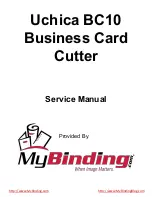
Page 26
Translation of the original operating manual
15
Cropping tips for using the Tined Weeder Pro
The Tined Weeder Pro's mode of action mainly consists of burying and uprooting the weeds and crumbling
the soil surface. It also stimulates tillering in cereals. Compared to hoeing machines, the Tined Weeder
Pro has two major benefits: It operates in a row-independent manner and has a comparatively high area
efficiency.
The seed rate and surface structure of the seedbed are very closely related to the success of harrowing
against weeds. Whereby shallow seeding excludes any pre-emergence harrowing. When the plants are
firmly rooted in the soil later on, harrowing can be performed again. At seeding depths of 3-4 cm, pre-
emergence harrowing is possible when the working width of the harrow is shallower. However, the
germinating seed may not be touched by the harrow tines during operation.
In general, the objective is to control weeds by harrowing at the root hair or cotelydon stage during the
growing season while protecting the crops as much as possible. The optimal mode of operation to achieve
this strongly depends on the soil, crop, and weather conditions. The optimal site-dependent mode of
operation can be found fastest by adjusting the working depth and varying the working speed. As a basic
setting on the harrow, the tips of the tines should be about vertical to the soil surface (see chapter 7.4
Working position and setting the working depth).
Warnings against excessive harrowing intensity are an increased number of uprooted, buried or bent
plants. Low crop losses can be compensated in advance through a slight increase in the seed rate of about
+10%. After finishing all field passes, the final crop density should not drop below the cropping-related
required values.
Other effects of tilling your fields with the Tined Weeder Pro, such as
Soil aeration,
Regulation of the water balance,
Incorporation of the seed for nurse crops and
Promoting tillering in cereals
make a significant contribution to the formation of good crops.
Summary for efficient and effective harrowing:
Important prerequisites are a level seedbed, sufficiently deep seed placement, uniform germination,
loose soil surface, few tracks, and dry weather.
A missed harrowing pass can NOT be performed at a later date.
Harrowing does not have a lasting effect => several consecutive work passes must be coordinated.
Optimal harrowing takes place at the limit of crop tolerance, in case of doubt, enumerate the crop
plant losses.
When seeding, account for crop plant losses.
The weed-controlling effect of the harrow is sometimes already achieved at low forward speeds
(above approx. 2 km/h).
Optimal adjustment of the harrow can take a lot of time.
Only the potential of harrowing is described here! Ultimately, harrowing success depends on the skill and
experience of the operator.







































